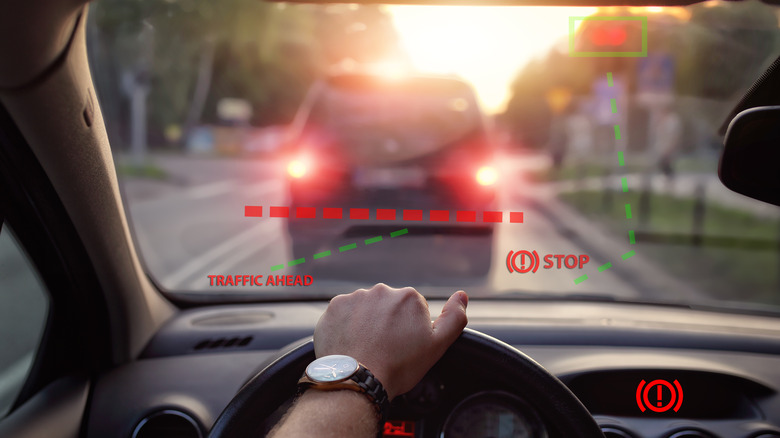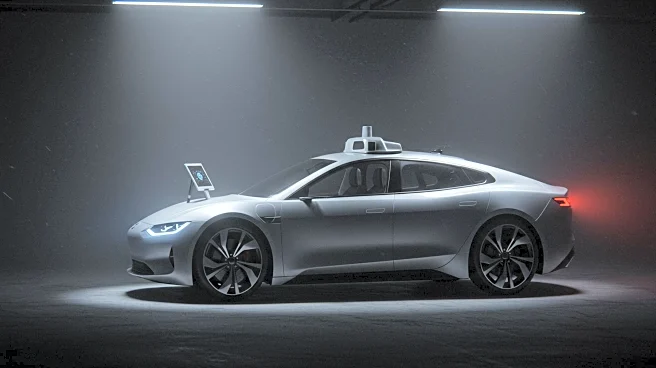
Getting behind the wheel in Europe can be a jarring experience for many American drivers. For one, drivers in England and some other countries don't drive on the right side of the road
. There is also an abundance of roundabouts and traffic cameras compared to the U.S. Additionally, there are subtle differences in the cars themselves. In Europe, for example, brake lights don't just illuminate — they flash.Remember that tail lights and brake lights are not the same thing. Brake lights are lit when
drivers apply pressure to the brake pedal, while tail lights activate when you turn on your headlights to show other drivers where you are on the road. In the U.S., you could say brake lights "flash" on and off as you tap your brake pedal, but in Europe you will spot a rapid flashing mode that is clearly different.
That's because many European cars come with something called adaptive or dynamic brake lights. These automatically turn on when a driver is going above 50 kilometers per hour, or about 31 mph, and brakes suddenly. Once activated, the brake lights will flash rapidly instead of displaying a solid red glow. These flashing lights are meant to grab the attention of the person driving behind you in order to avoid rear-end collisions.
Read more: 8 Enthusiast Cars That Are Absurdly Overrated
Why You Don't See Flashing Brake Lights In The U.S.

Each modern model year brings about new technology and safety features, including larger touch screens, more advanced operating systems, and better performance specs. Flashing brake lights seem like a simple and inexpensive safety feature to add, yet American cars do not have them. They are, in fact, illegal here, with the Federal Motor Vehicle Safety Standards decreeing that brake lights remain unblinking. While automakers have urged the National Highway Traffic Safety Administration to reconsider this stance, adaptive brake lights remain illegal in the U.S. If you've spotted them on the road, they are likely an aftermarket addition. Of course, emergency vehicles are also allowed to have flashing lights.
A 2014 study found flashing brake lights did improve the reaction time of drivers, which could result in fewer rear-end collisions. Rather than relying on adaptive brake lights, however, the U.S. has instead decided to invest in an alternative: an emergency braking system that automatically knows when to stop. This system uses sensors, cameras, and other technology to identify a potential collision and stop your car on its own. It is already found in many vehicles and will be required in all new cars by 2029.
Want the latest in tech and auto trends? Subscribe to our free newsletter for the latest headlines, expert guides, and how-to tips, one email at a time.
Read the original article on SlashGear.












